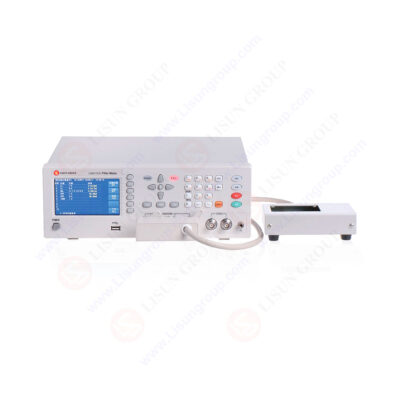
Principle of Common Mode Chokes
Common mode chokes (CMCs) are highly effective in dealing with common mode interference signals. Their working principle includes:
• Common Mode Interference: When common mode interference current passes through a common mode choke, the magnetic flux direction in both coils is the same. This increases the total inductance rapidly due to coupling, presenting a large inductive reactance to common mode signals, making it difficult for them to pass through. Thus, a common mode choke is also known as a common mode choke coil.
• Differential Mode Interference: For differential mode interference signals (i.e., differential mode interference), the magnetic flux cancels each other out, resulting in a small inductance, allowing differential mode signals to pass through without attenuation.
The two coils of a common mode choke are wound on a low-loss, high-permeability ferrite core. When current flows through the coils, their magnetic fields reinforce each other. The inductance of a common mode choke is related to the rated current of the EMI filter.
X Capacitors and Y Capacitors
• X Capacitors: With capacitance ranging from 0.01μF to 0.47μF, these are mainly used to filter differential mode interference.
• Y Capacitors: Connected to the output end, with the midpoint grounded, they effectively suppress common mode interference. Their capacitance ranges from 2200pF to 0.1μF. To reduce leakage current, the capacitance should not exceed 0.1μF.
Main Functions of Common Mode Chokes
• Suppress Common Mode Noise: Common mode chokes present a high impedance to common mode noise, preventing it from spreading to other parts. The coupling between coils creates a high impedance loop for common mode signals, blocking the propagation of common mode noise.
• Improve Signal Quality: By reducing electromagnetic radiation and common mode noise in sensitive circuits, common mode chokes enhance signal quality. In communication systems and high-speed data transmission, they reduce signal distortion and crosstalk, improving reliability and transmission speed.
• EMI Suppression: As part of a filter, common mode chokes effectively suppress electromagnetic interference (EMI) generated in electronic devices, reducing electromagnetic radiation caused by high-frequency oscillations, switching interference, and power supply noise.
• Solve Signal Integrity Issues: In high-speed data lines, common mode chokes address signal integrity and crosstalk issues, providing proper impedance matching and common mode suppression to ensure accurate and stable signal transmission.
• Enhance System Stability: In applications like variable frequency drives, common mode chokes effectively suppress common mode interference caused by power supply noise and switching interference, improving system stability and reliability.
LS8517CX Common Mode Inductor Balance Tester
Role of Electromagnetic Interference Filters
Power supply noise is a type of electromagnetic interference with a conducted noise spectrum range from 10kHz to 30MHz, reaching up to 150MHz. Depending on the propagation direction, power supply noise is categorized into:
• External Interference: Noise introduced from power lines.
• Internal Noise: Noise generated by electronic devices and conducted through power lines.
These noises are bidirectional interference signals, where electronic devices are both noise sources and affected objects.
Types of Noise Interference
• Differential Mode Interference: Noise between two power lines, mainly below 200Hz.
• Common Mode Interference: Noise between two power lines and the ground, mainly above 1MHz.
Electromagnetic interference filters must meet electromagnetic compatibility requirements and function as bidirectional RF filters. Specific requirements include:
• Filtering External Interference: Filters should eliminate external electromagnetic interference introduced through AC power lines.
• Suppressing Internal Interference: Filters should prevent the device itself from emitting noise interference.
By fulfilling these requirements, common mode chokes and electromagnetic interference filters effectively suppress electromagnetic interference, ensuring the normal operation of electronic devices.
Conclusion
Common mode chokes and electromagnetic interference filters play crucial roles in electronic devices. Common mode chokes improve signal reliability and transmission speed by suppressing common mode noise and enhancing signal quality. Electromagnetic interference filters ensure devices are free from external interference while preventing them from emitting interference signals. The proper application of these components can significantly enhance the stability and performance of electronic systems.
https://www.lisungroup.com/news/technology-news/application-of-common-mode-chokes-and-electromagnetic-interference-filters.html
.jpg)
Comments
Post a Comment